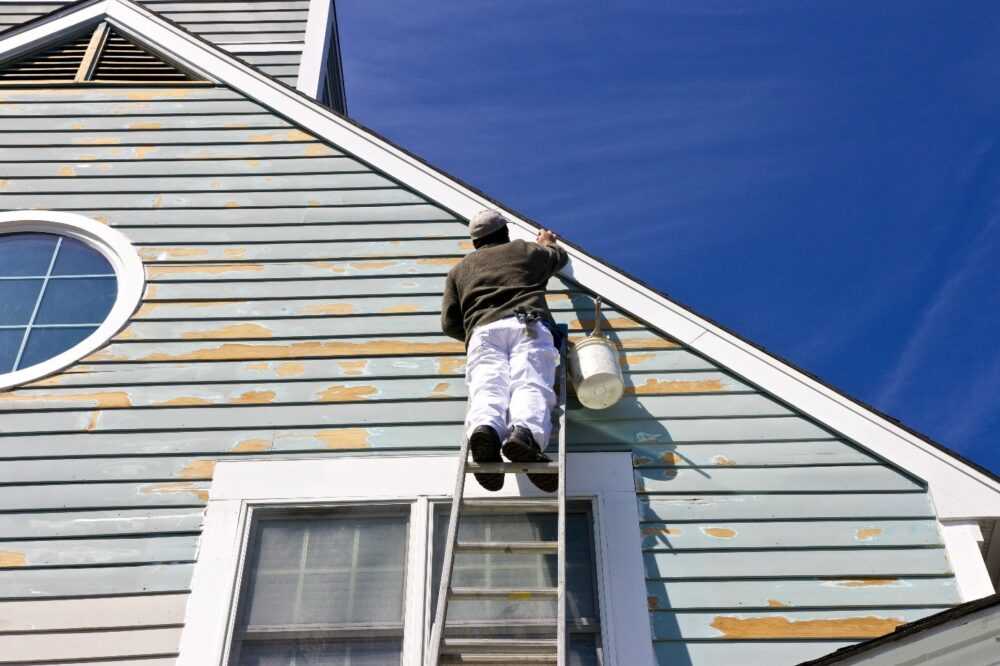An Overview |
How Weather Affects Your Home's Siding: Tips for Effective Siding Repair

Your home's siding is its first line of defense against the elements. From scorching summer heat to freezing winter storms, weather conditions can take a toll on the exterior of your home. Over time, exposure to sun, rain, wind, and snow can lead to wear and tear, causing siding to warp, crack, or deteriorate. Understanding how weather affects your home's siding and knowing how to repair and maintain it can help extend its lifespan and keep your home looking its best.
The Impact of Sun and Heat on Siding
Prolonged exposure to the sun can have a significant effect on your home's siding. Ultraviolet (UV) rays can cause the color of siding to fade, making it appear dull and worn. Extreme heat can also lead to expansion and warping, particularly in vinyl siding, which may cause panels to buckle or separate from the wall. In areas with intense sunlight, choosing siding materials with UV protection and reflective coatings can help reduce damage.
Regularly inspecting your siding for signs of fading or warping is essential. If you notice any issues, repainting or replacing damaged sections may be necessary. Ensuring proper installation with adequate spacing can also prevent heat-related warping by allowing the material to expand and contract naturally.
How Rain and Moisture Can Damage Siding
Moisture is one of the biggest threats to your home's siding. Rain, humidity, and snowmelt can seep into cracks and gaps, leading to mold growth, rot, and structural damage. Wood siding is particularly susceptible to water damage, but even materials like fiber cement and vinyl can develop issues if not properly maintained.
Checking for water damage is crucial, especially after heavy rainstorms. Look for signs of discoloration, soft spots, or mildew growth, as these indicate moisture infiltration. Keeping gutters clean and directing water away from your home's foundation can help prevent excess moisture from accumulating near the siding. If water damage occurs, replacing affected sections and sealing gaps with caulking can prevent further deterioration.

The Effects of Wind and Storms on Siding
Strong winds and severe storms can cause significant damage to siding. High-speed winds can loosen panels, rip off sections, or drive debris into the surface, leading to dents and cracks. Hailstorms can be especially destructive, leaving pockmarks and fractures in vinyl and aluminum siding.
After a storm, inspecting your home's siding for damage is essential. Even small cracks or loose panels can worsen over time, allowing moisture to penetrate. Repairing or replacing damaged siding promptly can prevent more extensive problems in the future. Choosing impact-resistant materials can also provide better durability against severe weather conditions.
How Cold Temperatures and Freezing Conditions Affect Siding
Winter weather presents unique challenges for siding materials. Freezing temperatures can cause some types of siding, particularly vinyl, to become brittle and more susceptible to cracking. Ice and snow accumulation can also put pressure on siding, leading to separation or warping.
To minimize the impact of cold weather, ensuring proper insulation and ventilation can help regulate temperature fluctuations and reduce stress on the siding. Clearing ice and snow buildup near the foundation and siding can prevent excessive moisture exposure. If cracks or gaps develop due to freezing conditions, sealing them promptly can help maintain the siding’s integrity.
Effective Siding Repair and Maintenance Tips
Regular maintenance is key to prolonging the life of your home's siding. Cleaning siding periodically with a gentle cleanser can remove dirt, mold, and debris, preventing long-term damage. Inspecting for signs of wear, such as cracks, warping, or loose panels, allows for early intervention before problems worsen.
When repairing damaged siding, using materials that match the existing structure ensures a uniform appearance and maintains the home’s aesthetic appeal. For small cracks or gaps, caulking and sealants can provide a quick fix, while larger damages may require partial or full replacement of panels. Hiring a professional for significant repairs can ensure proper installation and long-lasting results.